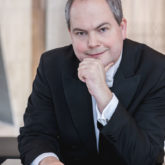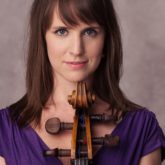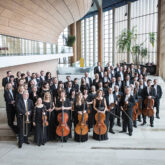
Budapest
Ditta Rohmann, György Vashegyi and the Hungarian National Philharmonic Orchestra
Lukács Ervin bérlet 4.
FERENC ERKEL: Hunyadi László – overture
Hunyadi László, the first masterpiece of the Hungarian national style of opera which ingeniously combined the language of French and Italian operas with the verbunkos musical elements of the late 18th century, was premiered at the Hungarian National Theatre in January 1844. The libretto was written by Béni Egressy, who also set the Szózat to music, and the opera achieved enormous success: in the 40-year period before the Budapest Opera House opened, it was performed some 250 times, and according to a critic of the time, “emits Hungarian spirit from the beginning to the end, and in musical terms it is really quite significant”. The 33 year-old Ferenc Erkel presented the main motifs of the work’s distinctive scenes in the overture, which became a beloved piece in the concert repertoire thanks to its atmospheric and instrumental colour, its daring changing of tones, and the work’s superb structure. The piece, which compresses the plot into a quarter of an hour, begins with the raw sound of a trumpet, and then advances to the stormy music of Vérpadkép, as well as the Bosszúkórus and, naturally, the theme of “Meghalt a Cselszövő”, which became a hit.
LÁSZLÓ DUBROVAY: Cello Concerto
In addition to the orchestral wind and string instruments in László Dubrovay’s Cello Concerto, composed in 2012, the work also demands a folk percussion section, a harp, and a celesta. The formal structure of the three-movement composition follows classical models: the first movement is a sonata, the second is a trio, and the third is written in a rondo form. In the main theme of the opening movement, a sharply dissonant wind fanfare, like a detuned, grotesque version of Beethoven’s ‘fate motif’, strains against the sliding melody of the solo cello. The lyrical theme, first heard on the bassoon, is followed by the child-like, playful closing theme. In the main part of the second movement, the tightly controlled, weeping theme is accompanied by a mournful, foreboding drumming. The trio’s lyrical cello melody, in the words of the composer, “guides us into a different, transcendent world.” In the energetic, eventful finale, the composer gives a grand opportunity for the virtuosity of the soloist to shine.
BOLDIZSÁR CSÍKY: Transylvanian Rhapsody
Boldizsár Csíky was born in Târgu Mureș in 1937, and graduated from the conservatory in Cluj-Napoca, also in Romania, in 1961. He spent 40 years in a leadership role at the Philharmonic Orchestra in Târgu Mureș, the last ten years of which he spent as director of the institution. He has worked in nearly every musical genre, and his works have been performed in many European countries, as well as in the United States and Japan. Among his main professional awards are the Bartók-Pásztory Award, the Georg Enescu Award, the Ferenc Erkel Award, the award of the Union of Romanian Composers, and most recently, the Pro Cultura Hungarica prize. He is an honorary citizen of Târgu Mureș, and has received an Officer’s Cross of the Order of Merit of Hungary.
He wrote the Transylvanian Rhapsody in 2012, and it premiered in the same year with the Târgu Mureș Philharmonic Orchestra, led by the conductor Gh. Costin from Timișoara. The orchestra of the Hungarian National Philharmonic performed two of the composer’s orchestral works – with the outstanding Zoltán Kocsis as conductor – in their Hungarian premieres, but this piece strikes a more ‘popular’ tone than the gloomy “Gulag” or the tense winter poem “A Hegy” (The Mountain). The Rhapsody is full of intensely polyphonic phrases and the unique tension of contradictory, simultaneously overlapping melodies. It’s not uncommon for the ‘spectacular’ instrumentation or the chorus-like, inward-turning sections to go to extremes. Calling the piece a “Rhapsody” is justified by its alternating of contradictory atmospheres, and the accompanying frequent changes in tempo. In terms of its musical language, the piece uses the identity and significance of a musical mother tongue understood through the spirit of Bartók’s expression. The composer, without referencing any particular folk songs, clearly shows where he belongs through the spirit of his music.
ZOLTÁN KODÁLY: Háry János – suite
The narrative poem by the reform-era poet János Garay provides the basis for Zoltán Kodály’s opera, which premiered in 1926. Through this work, authentic Hungarian folk song and the folk music derived from were incorporated into the genre of musical theatre. The nostalgic stories and adventures of the Hussar of Nagyabony, known for his outlandish claims and endless story-telling that evoke a world of fairy tales, provided the perfect platform for the 43-year-old composer to introduce the delightful diversity of Hungarian folk songs. The suite created from the opera lines up the most exciting scenes and musical moments in succession, revealing a remarkable dramaturgical sensibility. In the symphonic work or around 25 minutes in length, Kodály presents in incredibly rich tapestry of orchestral colours, the Viennese Musical Clock, the folk melody duet for Háry and Örzse entitled This Side of the Tisza, and the sweeping momentum of the Intermezzo, written in the verbunkos style.




